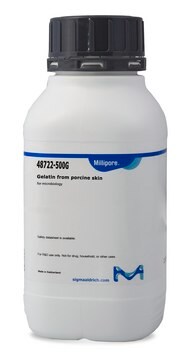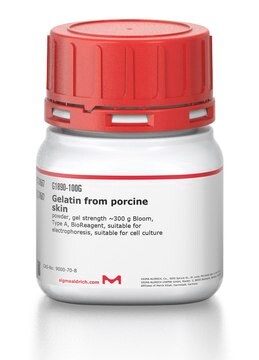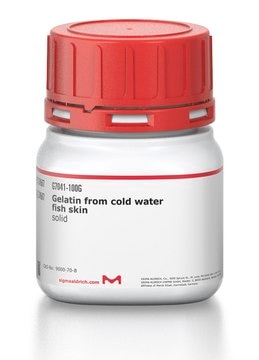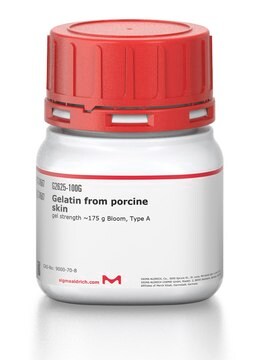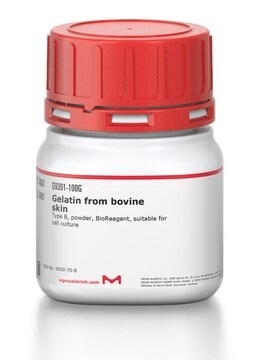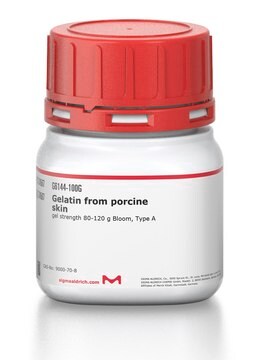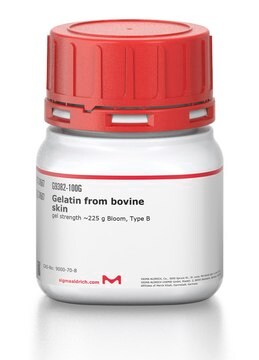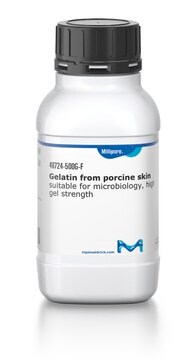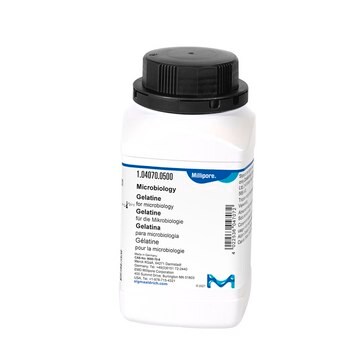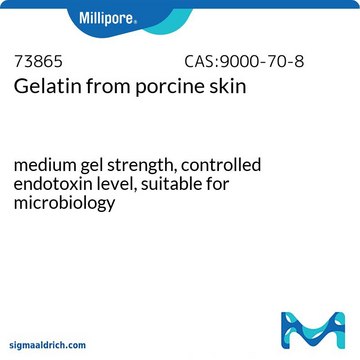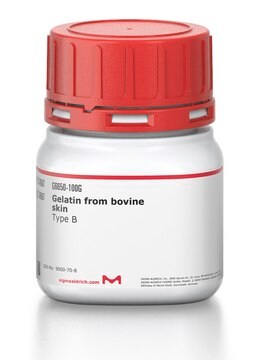39465
Gelatina
suitable for microbiology, ultrahigh gel strength
About This Item
Prodotti consigliati
Origine biologica
Porcine
Livello qualitativo
Stato
powder
Qualità
ultrahigh gel strength
Durata
limited shelf life, expiry date on the label
Perdita
9.5-12.5% loss on drying
Trasmittanza
450 nm, ≥85%
620 nm, ≥95%
pH
5.20-5.60
Conducibilità
120-190 μS/cm at 30 °C (1%)
Viscosità
5.10-5.80 mPa.s
Resistenza del gel
280-302 g BloomAOAC
Solubilità
H2O: 67 mg/mL at 60 °C
Cationi in tracce
Ca: ≤100 mg/kg
applicazioni
microbiology
Cerchi prodotti simili? Visita Guida al confronto tra prodotti
Applicazioni
Gelatin has been used in many applications. It has use in coating cell culture to improve attachment of cells, being added to PCR to stabilize Taq DNA, as a blocking reagent in Western blotting, ELISA, and immunochemistry, and as a component of media for species differentiation in bacteriology. As a biocompatible polymer, it has used as a delivery vehicle for release of active biomolecules and in generation of scaffolds for tissue engineering applications. In the pharmaceutical industry, geltan can be used as a suspending and encapsulating agent, among other applications.
Componenti
Avvertenza
Nota sulla preparazione
Codice della classe di stoccaggio
11 - Combustible Solids
Classe di pericolosità dell'acqua (WGK)
nwg
Punto d’infiammabilità (°F)
Not applicable
Punto d’infiammabilità (°C)
Not applicable
Scegli una delle versioni più recenti:
Certificati d'analisi (COA)
Non trovi la versione di tuo interesse?
Se hai bisogno di una versione specifica, puoi cercare il certificato tramite il numero di lotto.
Possiedi già questo prodotto?
I documenti relativi ai prodotti acquistati recentemente sono disponibili nell’Archivio dei documenti.
I clienti hanno visto anche
Il team dei nostri ricercatori vanta grande esperienza in tutte le aree della ricerca quali Life Science, scienza dei materiali, sintesi chimica, cromatografia, discipline analitiche, ecc..
Contatta l'Assistenza Tecnica.
